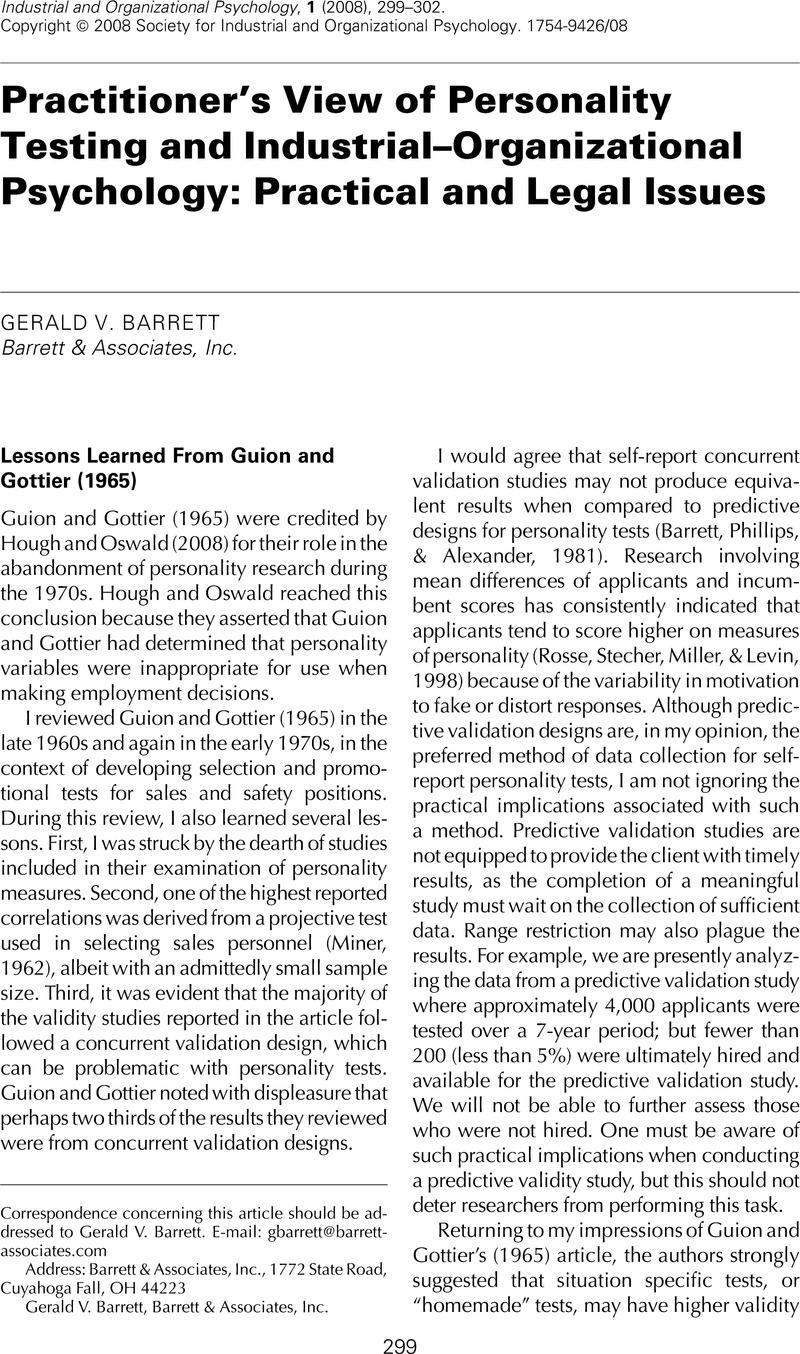Crossref Citations
This article has been cited by the following publications. This list is generated based on data provided by Crossref.
Oswald, Frederick L.
and
Hough, Leaetta M.
2008.
Personality Testing and Industrial–Organizational Psychology: A Productive Exchange and Some Future Directions.
Industrial and Organizational Psychology,
Vol. 1,
Issue. 3,
p.
323.
Denis, Pascale L.
Morin, Denis
and
Guindon, Claude
2010.
Exploring the Capacity of NEO PI‐R Facets to Predict Job Performance in Two French‐Canadian Samples.
International Journal of Selection and Assessment,
Vol. 18,
Issue. 2,
p.
201.
Sackett, Paul R.
Putka, Dan J.
and
McCloy, Rodney A.
2012.
The Oxford Handbook of Personnel Assessment and Selection.
p.
91.
Bobko, Philip
and
Roth, Philip L.
2013.
Reviewing, Categorizing, and Analyzing the Literature on Black–White Mean Differences for Predictors of Job Performance: Verifying Some perceptions and Updating/Correcting Others.
Personnel Psychology,
Vol. 66,
Issue. 1,
p.
91.
Jackson, Duncan J. R.
2014.
Can Maladaptive Personality Be Assessed in Organizations?.
Industrial and Organizational Psychology,
Vol. 7,
Issue. 1,
p.
110.



